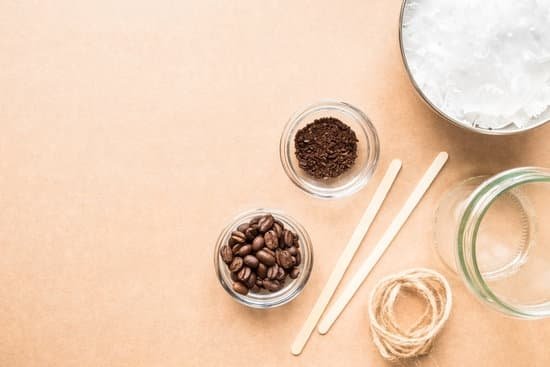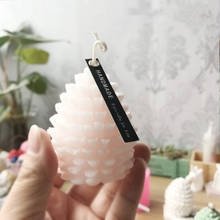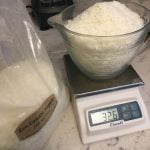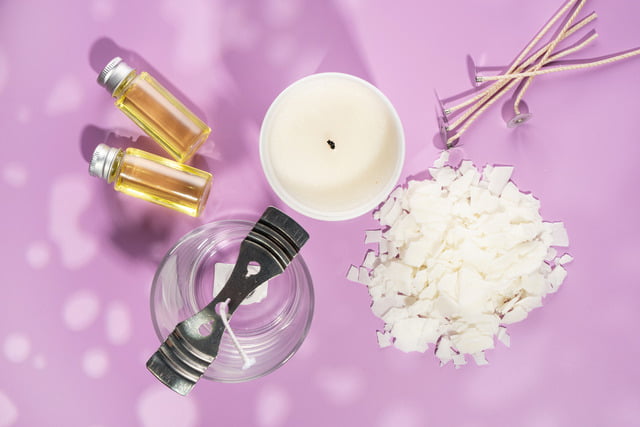Are you interested in exploring the world of candle making? Whether you’re a beginner or an experienced enthusiast, understanding the art and science behind candle making techniques is essential. In this article, we will delve into the basics, explore different methods, and provide tips for troubleshooting common issues. Plus, we’ll offer a free downloadable PDF with in-depth candle making techniques.
Candle making is a fascinating craft that combines creativity and precision. From traditional methods to modern techniques, there is a wide range of approaches to creating beautiful and functional candles. The history of candle making is rich and diverse, spanning centuries of innovation and cultural significance. To dive deeper into this timeless craft, it’s important to understand the fundamentals and explore various techniques for creating unique and personalized candles.
In the following sections, we will cover everything from understanding the basics of candle making to exploring advanced techniques for adding fragrance, color, and unique designs to your creations. We’ll also discuss common issues that may arise during the candle making process and provide tips for proper care and maintenance.
By the end of this article, you’ll have a comprehensive overview of candle making techniques and be equipped with valuable resources for further learning. So let’s delve into the art of candle making.
Understanding the Basics of Candle Making
Currently, the candle-making industry is booming, with people looking for unique and personalized candles to light up their living spaces. Before delving into the more advanced techniques, it’s crucial to understand the basics of candle making. By mastering the fundamentals, you’ll be better equipped to experiment with different methods and create beautiful candles that suit your preferences.
When it comes to candle making, having the right materials and equipment is essential. You will need wax, wicks, fragrance oils or essential oils, a double boiler or melting pot, a thermometer, and a stirring utensil. Safety precautions are also paramount when working with hot wax and fragrances. It’s important to have a well-ventilated workspace and protective gear such as gloves and safety goggles.
Choosing the right wax and wicks for your candles is another crucial aspect of candle making. Different types of waxes have unique properties that affect the burning time and scent throw of your candles. Similarly, selecting the appropriate wick size and material is vital in ensuring an even burn and preventing issues like tunneling. By understanding these key elements, beginners can lay a strong foundation for successful candle making endeavors.
| Materials | Equipment |
|---|---|
| Wax | Double boiler/melting pot |
| Wicks | Thermometer |
| Fragrance oils/essential oils | Stirring utensil |
Exploring Different Candle Making Techniques
When it comes to candle making, there are various techniques that can be used to create beautiful and unique candles. From traditional methods that have been passed down through generations to modern techniques that incorporate the latest tools and materials, the possibilities are endless.
One of the most important aspects of exploring different candle making techniques is understanding the step-by-step instructions for each method. Whether you’re interested in making container candles, pillar candles, or even specialty shaped candles, having a clear understanding of the process is essential.
Experimenting with different candle making techniques allows you to unleash your creativity and truly customize your creations. While some methods may require more specialized equipment or skills, it’s worth exploring and trying out new techniques to find what works best for you. Additionally, utilizing various candle making methods can also help you expand your product line if you’re considering starting a candle making business.
For those looking to explore a wide range of candle making techniques, it can be helpful to refer to a comprehensive resource such as a candle making techniques PDF. This type of downloadable document often provides detailed instructions, tips, and visuals for different techniques, making it an invaluable tool for both beginners and experienced candle makers alike.
| Candle Making Techniques | Description |
|---|---|
| Traditional methods vs. modern techniques | Comparing and contrasting classic candle making methods with newer approaches using advanced tools and materials |
| Step-by-step instructions for various candle making methods | Detailed guidance on how to create different types of candles using specific techniques such as pouring, dipping, or molding |
| Tips for experimenting with different techniques | Suggestions on how to mix and match various methods to achieve unique designs and effects in handmade candles |
Advanced Candle Making Techniques
Adding Fragrance and Color to Your Candles
One of the most exciting aspects of advanced candle making is the opportunity to add fragrance and color to your creations. Whether you prefer the natural scents of essential oils or the wide range of synthetic fragrances available, adding scent to your candles can elevate the entire experience for those who indulge in them.
When it comes to color, there are various options such as liquid dyes, pigments, and even natural additives like spices and herbs that can be used to create unique and eye-catching candles.
Creating Unique Shapes and Designs
While beginners may start with simple molded or container candles, advanced candle makers often enjoy experimenting with unique shapes and designs. From intricately carved pillar candles to sculpted wax art pieces, there’s no limit to the creativity that can be expressed through candle making. Additionally, using molds of different shapes and sizes can also add an extra layer of creativity to your candle making endeavors.
Mastering the Art of Container and Pillar Candles
Once you’ve honed your skills in basic candle making, it’s time to master the art of creating container and pillar candles. These two types of candles require a slightly different approach when it comes to wicking, pouring temperatures, and even cooling methods.
Understanding these nuances will allow you to create flawless container candles with smooth tops and perfectly centered wicks, as well as pillar candles that burn evenly from top to bottom. Taking the time to perfect these techniques will set you apart as a skilled candle maker.
By delving into these advanced techniques, you’ll be able to elevate your candle making skills from novice to expert level. For a more comprehensive guide on advanced candle making techniques, feel free to download our free Candle Making Techniques PDF for step-by-step instructions on everything from fragrance blending to intricate mold designs.
Troubleshooting Common Candle Making Issues
Candle making can be a rewarding and enjoyable hobby, but it’s not without its challenges. As you delve into the world of creating your own candles, you may encounter common issues that can affect the quality and appearance of your final products. Fortunately, many of these issues can be easily resolved with the right knowledge and techniques.
One common problem that candle makers face is the presence of air bubbles and sinkholes in their finished candles. This can occur when the wax cools too quickly or if there are impurities present in the wax.
To prevent this issue, it’s important to pour your wax at the correct temperature and to carefully monitor the cooling process. Using a heat gun or a hairdryer on a low setting can also help to eliminate any air bubbles that form on the surface of your candles.
Another frequent issue that beginners often encounter is wick problems, such as tunneling or uneven burning. This can be caused by using the wrong type or size of wick for your chosen wax and container, or by not trimming the wick properly before each use.
To avoid tunneling, ensure that you are using the correct size wick for your container and that you are allowing your candle to achieve a full melt pool during each use. Regularly trimming the wick to about 1/4 inch before lighting can also help to prevent uneven burning.
Discoloration is another challenge that candle makers may face, especially when adding fragrance oils or dyes to their candles. To maintain consistent color throughout your candle, it’s essential to carefully measure and mix any additives according to the manufacturer’s recommendations. Keeping accurate records of your formulas and experimenting with small batches can also help you identify any potential issues with discoloration before producing larger quantities of candles.
By learning how to troubleshoot these common candle making issues, you’ll be better equipped to create high-quality candles that burn evenly and look beautiful every time. Remember that patience and practice are key when mastering the art of candle making, so don’t be discouraged if you encounter difficulties along the way. With perseverance and a willingness to learn from mistakes, you’ll soon become proficient in identifying and addressing common candle making challenges.
For more in-depth guidance on troubleshooting common candle making issues, feel free to download our free Candle Making Techniques PDF guide for step-by-step instructions and expert tips on overcoming these challenges while creating beautiful handmade candles.
The Importance of Proper Candle Care
Proper candle care is essential for ensuring that your handmade candles maintain their quality and burn safely. By following these tips, you can extend the life of your candles and enhance their performance.
- Storing and maintaining your candles: Proper storage is crucial for preserving the scent and appearance of your candles. Keep them away from direct sunlight, heat sources, and drafts to prevent discoloration, melting, or warping. Additionally, dust can affect the appearance of your candles, so it’s important to keep them covered when not in use.
- Tips for prolonging the life of your candles: To maximize burn time, it’s important to trim the wick before each use to about 1/4 inch in length. This prevents soot buildup and ensures a clean, even burn. Avoid burning candles for more than 4 hours at a time to prevent overheating and potential safety hazards.
- Proper burning techniques for optimal scent throw and burn time: When lighting your candle for the first time, allow it to burn until the wax pool reaches the edges of the container. This helps prevent tunneling and ensures an even burn throughout the life of the candle. For scented candles, allowing a full melt pool will also enhance the fragrance throw.
Taking proper care of your candles not only ensures a better user experience but also contributes to their longevity. With these simple practices, you can enjoy beautiful, fragrant candles for many hours of relaxation.
If you are interested in delving deeper into proper candle care techniques or want to explore advanced candle making methods, consider downloading our free Candle Making Techniques PDF for comprehensive insights and instructions on taking care of your handmade creations.
Resources for Further Learning
Recommended Books and Websites
For those who are eager to delve deeper into the art of candle making, there are numerous resources available to expand your knowledge. There are a variety of books that provide in-depth information on advanced candle making techniques, troubleshooting common issues, and even business tips for those interested in selling their handmade candles.
Some recommended websites also offer valuable insights, from tutorials and step-by-step guides to forums where you can connect with other candle making enthusiasts and seek advice.
Online Workshops and Courses
If you prefer a more interactive approach to learning, online workshops and courses can be an excellent way to hone your candle making skills. Many experienced candle makers offer virtual classes that cover everything from basic techniques to advanced methods like creating unique designs and experimenting with different types of wax.
These workshops often provide live demonstrations, Q&A sessions, and hands-on activities that allow you to learn from the comfort of your own home while receiving instant feedback from professionals in the field.
Finding Quality Candle Making Supplies
In addition to educational resources, it’s important to have access to high-quality materials and equipment for your candle making endeavors. Finding reliable suppliers for wax, wicks, fragrances, dyes, molds, and containers is crucial for achieving the best results.
There are numerous options available both online and in-store, so it’s essential to research and compare different suppliers to ensure you’re getting the best value for your investment. Whether you’re looking for all-natural ingredients or specialty items for advanced techniques, knowing where to find quality supplies is a key part of progressing in your candle making journey.
Conclusion and Free Candle Making Techniques PDF
In conclusion, candle making is a wonderful blend of art and science that has been practiced for centuries. From the basics of understanding materials and safety precautions, to more advanced techniques like adding fragrance and color, there is always something new to learn for candle making enthusiasts. Whether you prefer traditional methods or want to experiment with modern techniques, the possibilities are endless.
For those looking to delve deeper into the world of candle making, there are numerous resources available for further learning. From recommended books and websites to online workshops and courses, there are plenty of opportunities to hone your skills and expand your knowledge in this craft. Additionally, finding quality candle making supplies is key to creating beautiful candles, so it’s important to know where to look for the best materials.
As a way to thank our readers for their interest in candle making techniques, we are offering a free downloadable PDF that provides in-depth information on various candle making methods. This PDF serves as a valuable reference guide that can be used as a tool for both beginners and experienced candle makers alike.
We encourage our readers to continue exploring the world of candle making and to always seek out new ways to express their creativity through this timeless craft.
Frequently Asked Questions
What Are the Different Method of Making Candles?
There are several methods of making candles, including the traditional method of melting wax and pouring it into molds, as well as the more modern method of using candle making kits or even a microwave.
What Not to Do When Making Candles?
When making candles, it’s important not to overheat the wax, as it can be a fire hazard. Additionally, using fragile containers or adding too much fragrance can also lead to safety issues.
What Is the Formula for Candle Making?
The formula for candle making involves a combination of wax, fragrance oil, and dye (if desired). The exact proportions will vary depending on the type of candle being made and personal preference. It’s important to follow a reliable recipe for successful results.

Welcome to my candle making blog! In this blog, I will be sharing my tips and tricks for making candles. I will also be sharing some of my favorite recipes.





